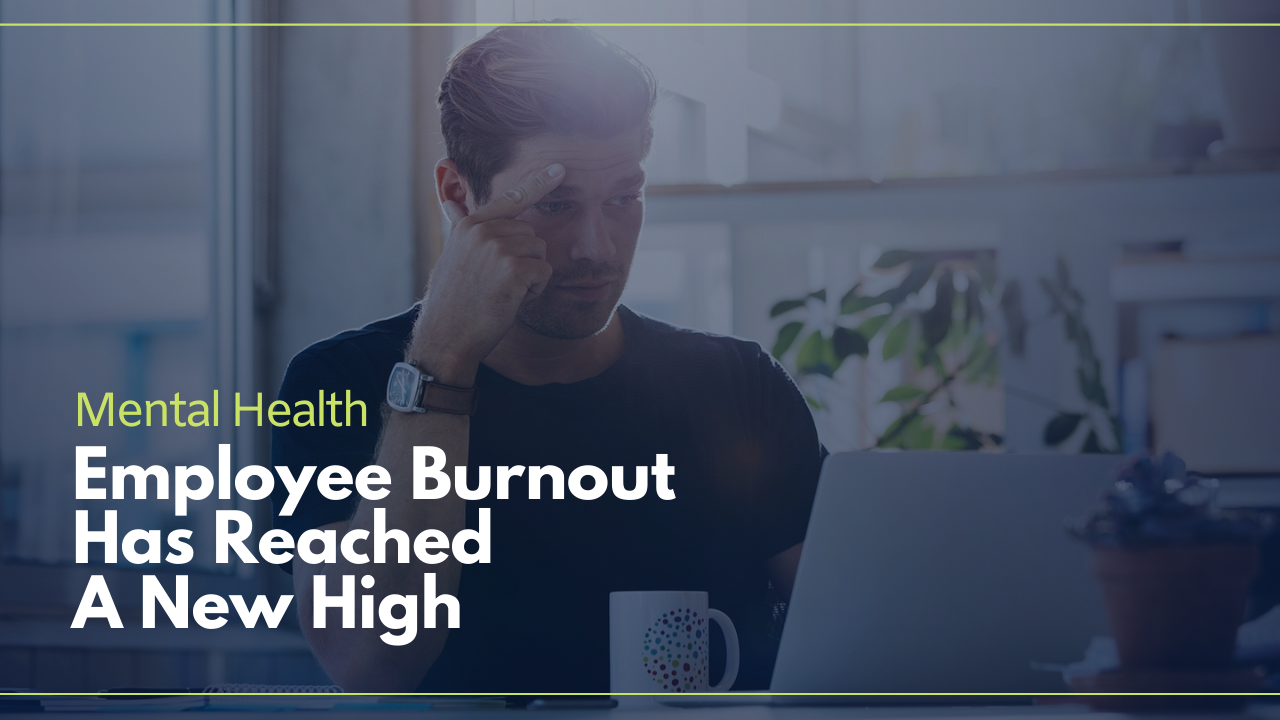- Worrying new research shows that employee burnout has reached a two-year high.
- This “unprecedented” situation is fuelled by the pandemic, as people are unable to compartmentalize work and personal life.
- Employers can help by creating opportunities for connection and a sense of belonging.
A recent survey from Glint, found that employee burnout has reached a new high.
This is concerning. More concerning, however, is the fact that Glint believes burnout shows “no signs of abating.”
The survey aimed to determine how employees are feeling right now.
Burnout risk has been gradually trending up throughout the year, according to Glint’s data, with a spike in March.
Now, employee burnout risk has reached a two-year high.
“According to our data, we are in unprecedented employee-burnout territory. Even the term ‘burnout’ has arguably become a limited representation of what we are facing: a sustained level of stress, anxiety, and provocation with no end in sight.”

Employees Are Mentally Exhausted
The survey found that “employees are both mentally and emotionally exhausted, and they’ll be finishing the calendar year with very little left to give.”
This is why companies need to prioritize wellbeing and ensure that they are supporting employees in all aspects of their humanity, not just work.
With the onset of the pandemic and with people still largely working from home, it’s impossible for people to compartmentalize work and personal life.
It has been widely documented that a person’s wellbeing impacts overall company performance. Workers who feel well are overall more productive, more engaged, and happier at work. On the other hand, if a worker’s wellbeing is suffering, their work will also suffer, and so will their feelings toward their employer.
What Employers Can Do
“Glint’s research shows that employees tend to feel belonging in the workplace when they have a shared sense of purpose, are accepted fully for who they are, feel cared for and offer care to their coworkers.”
Beyond belonging, Glint has found that feelings of connection are important for employees and their wellbeing.
“Employees who say their employer is helping them feel connected are four times more likely to report feeling well supported.”
Unfortunately, Glint’s most recent survey found that employees’ perception of their companies’ effort to promote connection have dropped.
There seems to be a gap between what employers are offering and what employees need.
One way organizations can make sure that they are supporting employees is by starting an honest, open conversation around wellbeing.
“Consistent, thoughtful conversations between manager and employee will help your organization support each employee as they work through their individual circumstances. Even better is for your organization to recognize and embrace that these conversations have taken on a more personal tone this year, addressing the needs of the whole person rather than focusing solely on work priorities.”
Data shows that employees who have regular conversations with their managers are able to better do their work and take care of themselves.
In addition to starting the conversation, below are some other strategies employers can use to better support employees as they deal with stress, anxiety, and burnout.
- Provide access to resources, free and paid. These resources could be access to telehealth, information about coping with stress and anxiety, how to create a budget, childcare options, etc.
- Allow employees to take a mental health day, especially if they continue working from home. Oftentimes, people just need a day to regroup and recharge themselves. By allowing employees to take a mental health day, they will feel more comfortable addressing their wellbeing and your organization will be better positioned to support them.
- Focus on your managers. Glint found that managers tend to burn out at higher rates than individual contributors, and their burnout tends to be cyclical. If your manager is showing symptoms of burnout, make sure these are addressed as they could easily affect team performance, cohesion, and collaboration.
- Encourage self-care; remind employees to take regular breaks throughout the work day and allow for flexible work arrangements.
- If necessary adjust workloads and revise goals.
- Be proactive, educate employees on the warning signs of burnout.


 Dr. Gleb Tsipursky – The Office Whisperer
Dr. Gleb Tsipursky – The Office Whisperer Nirit Cohen – WorkFutures
Nirit Cohen – WorkFutures Angela Howard – Culture Expert
Angela Howard – Culture Expert Drew Jones – Design & Innovation
Drew Jones – Design & Innovation Jonathan Price – CRE & Flex Expert
Jonathan Price – CRE & Flex Expert












